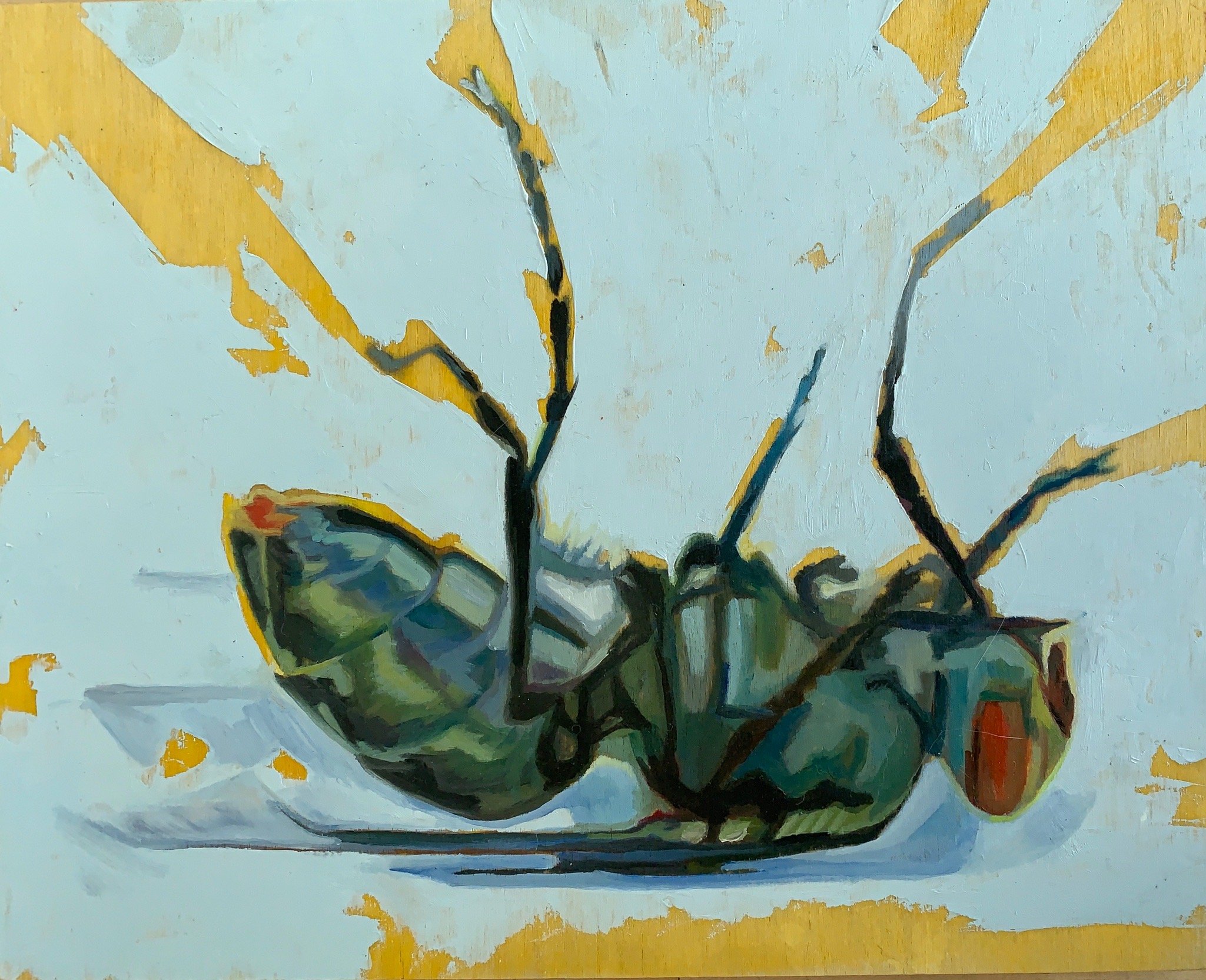 Image 1 of 5
Image 1 of 5

 Image 2 of 5
Image 2 of 5

 Image 3 of 5
Image 3 of 5

 Image 4 of 5
Image 4 of 5

 Image 5 of 5
Image 5 of 5






Honey bee with heavy pollen legs
9 x 12 inches
oil on wood
2019
Bees don't just transport pollen between plants, they also bring balls of it back to the hive for food. These "pollen pellets," which also include nectar and can account for 30% of a bee's weight, hang off their hind legs like overstuffed saddlebags (pictured). Now, researchers have investigated just how securely bees carry their precious cargo. The team caught roughly 20 of the insects returning to their hives and examined their legs and pollen pellets using both high-resolution imaging and a technique similar to an x-ray. Long hairs on the bees' legs helped hold the pollen pellets in place as the animals flew, the team reported last week at the 70th Annual Meeting of the American Physical Society Division of Fluid Dynamics in Denver. The researchers then tugged on some of the pollen pellets using elastic string. They found that the pellets, though seemingly precarious, were firmly attached: The force necessary to dislodge a pellet was about 20 times more than the force a bee typically experiences while flying. These findings can help scientists design artificial pollinators in the future, the team suggests.
swipe to see more saddlebags bees. Two are sold.
9 x 12 inches
oil on wood
2019
Bees don't just transport pollen between plants, they also bring balls of it back to the hive for food. These "pollen pellets," which also include nectar and can account for 30% of a bee's weight, hang off their hind legs like overstuffed saddlebags (pictured). Now, researchers have investigated just how securely bees carry their precious cargo. The team caught roughly 20 of the insects returning to their hives and examined their legs and pollen pellets using both high-resolution imaging and a technique similar to an x-ray. Long hairs on the bees' legs helped hold the pollen pellets in place as the animals flew, the team reported last week at the 70th Annual Meeting of the American Physical Society Division of Fluid Dynamics in Denver. The researchers then tugged on some of the pollen pellets using elastic string. They found that the pellets, though seemingly precarious, were firmly attached: The force necessary to dislodge a pellet was about 20 times more than the force a bee typically experiences while flying. These findings can help scientists design artificial pollinators in the future, the team suggests.
swipe to see more saddlebags bees. Two are sold.











